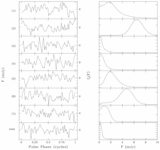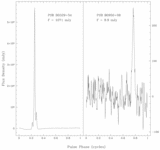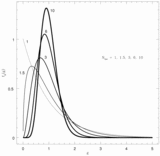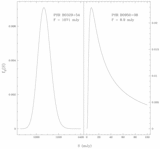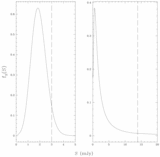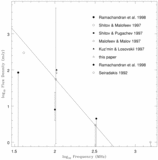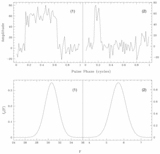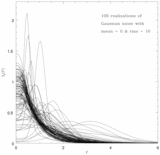Image Details

Caption: Fig. 3.
Above: For PSR B0329+54, all individual pulses with amplitudes above 9 σ have been plotted vs. DM and arrival time. This pulsar, at a DM of 26.8 pc cm﹩^{-3}﹩, is clearly detectable through its individual pulses. Below: The number of isolated pulses above a 4 σ threshold is plotted vs. DM for (left to right) B0329+54, B0950+08, and Geminga. While a peak at the DM of PSR B0329+54 is again obvious, there is no evidence of individual pulses from PSR B0950+08 or Geminga, both with DM ﹩\approx ﹩3 pc cm﹩^{-3}﹩. The individual pulses detected in these directions are most likely due to the considerable interference at 317 MHz. We note that the baseline of the histograms is not zero, and the distributions of pulses for PSR B0950+08 and Geminga are consistent with a uniform distribution in DM. We also note that, while the number of pulses above threshold is 25 times greater for Geminga than for B0950+08, the total time of the Geminga observations is greater by a factor of 40, and so the rate of pulse detection is lower for Geminga.
Copyright and Terms & Conditions
© 1999. The American Astronomical Society. All rights reserved. Printed in U.S.A.


